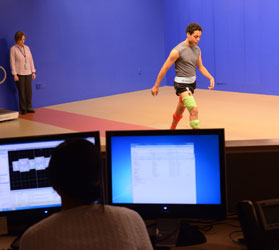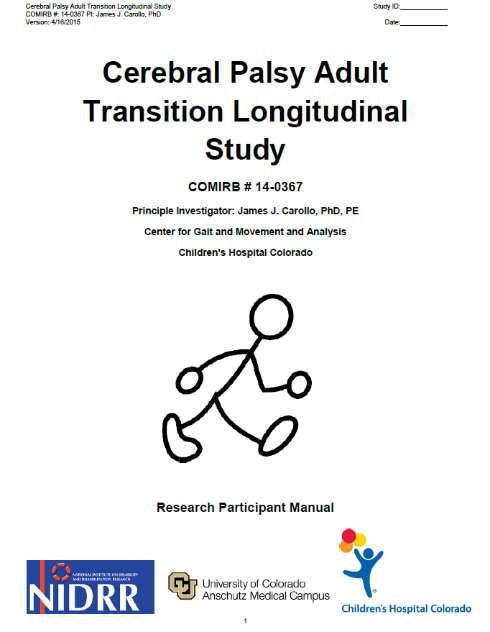The Cerebral Palsy Adult Transition Longitudinal Study

The “Cerebral Palsy Adult Transition Longitudinal Study (CPAT)” has the goal to address the unmet health needs and quality of life adults with Cerebral Palsy (CP).
Why the CPAT Study is Important
Cerebral palsy (CP) is a childhood onset condition that includes a group of chronic, non-progressive disorders affecting body movement, muscle coordination, balance, and posture. It is the most common childhood disability, affecting approximately 3.5 per 1000 live births1. Individuals with CP are at an increased risk for age-related morbidities due to functional impairments, maladapted growth, and the developments of secondary health conditions. Additionally, when many individuals reach adulthood, many services, interventions, or treatments are no longer available to them2, typically because they have left the childhood healthcare system and adult providers either aren’t familiar with the ongoing treatment requirements of pediatric onset disabilities, or third-party payors seldom support interventions and assessments that are perceived to be only appropriate in children. As such, the CPAT study was developed to help improve the health of adults with CP as they transition to adult hood and continue to age.
To contact the CPAT Study Staff directly, please email CPAT@childrenscolorado.org
Publications
- Ng TKS, Tagawa A, Ho RC, Larbi A, Kua EH, Mahendran R, Carollo JJ, Heyn PC. Commonalities in biomarkers and phenotypes between mild cognitive impairment and cerebral palsy: a pilot exploratory study. Aging (Albany NY). 2021 Jan 26;13(2):1773-1816. doi: 10.18632/aging.202563. Epub 2021 Jan 26. PMID: 33497355.
- Baer H, Thomas S, Pan Z, Tagawa A, Carollo JJ, Heyn P: Self-reported physical function is associated with walking speed in adults with cerebral palsy. Journal of Pediatric Rehabilitation Medicine. Jun: doi: 10.3233/PRM-180585. Epub 2019 Jun 10. PMID: 31227669
- Heyn P, Thomas S, Tagawa A, Pan Z, Carollo JJ: Prevalence of Metabolic Syndrome and Cardiovascular Disease Risk Factors in Young Adults with Cerebral Palsy. Developmental Medicine & Child Neurology. Apr; 61(4):477-483, 2019. doi: 10.1111/dmcn. 14148. Epub 2019 Jan 20. PMID: 30663044
- Oliveira T, Carollo JJ, Robertson D, Pan Z, Heyn P: Incidence of Epilepsy in Adults with Cerebral Palsy and Secondary Health Outcomes: A Review and Proposed Feasibility Study. Journal of Neurological Disorders, 2(6), October 2014.
- Ng TKS, Coughlan C, Heyn PC, Tagawa A, Carollo JJ, Kua EH, Mahendran R. Increased plasma brain-derived neurotrophic factor (BDNF) as a potential biomarker for and compensatory mechanism in mild cognitive impairment: a case-control study. Aging (Albany NY). 2021; 13:. https://doi.org/10.18632/aging.203598
- Noten S, van den Berg-Emons RJG, Thorpe DE, Heyn PC, Marciniak CM, McPhee PG, Lamberts RP, Langerak NG, Verschuren O, Salokivi T, Morrison KM, Peterson MD, Limsakul C, Stam HJ, Papageorgiou G, Versmissen J, Van Der Slot WMA. Blood pressure in adults with cerebral palsy: a systematic review and meta-analysis of individual participant data. J Hypertens. 2021 Jun 7. doi: 10.1097/HJH.0000000000002912. Epub ahead of print. PMID: 34102658.
